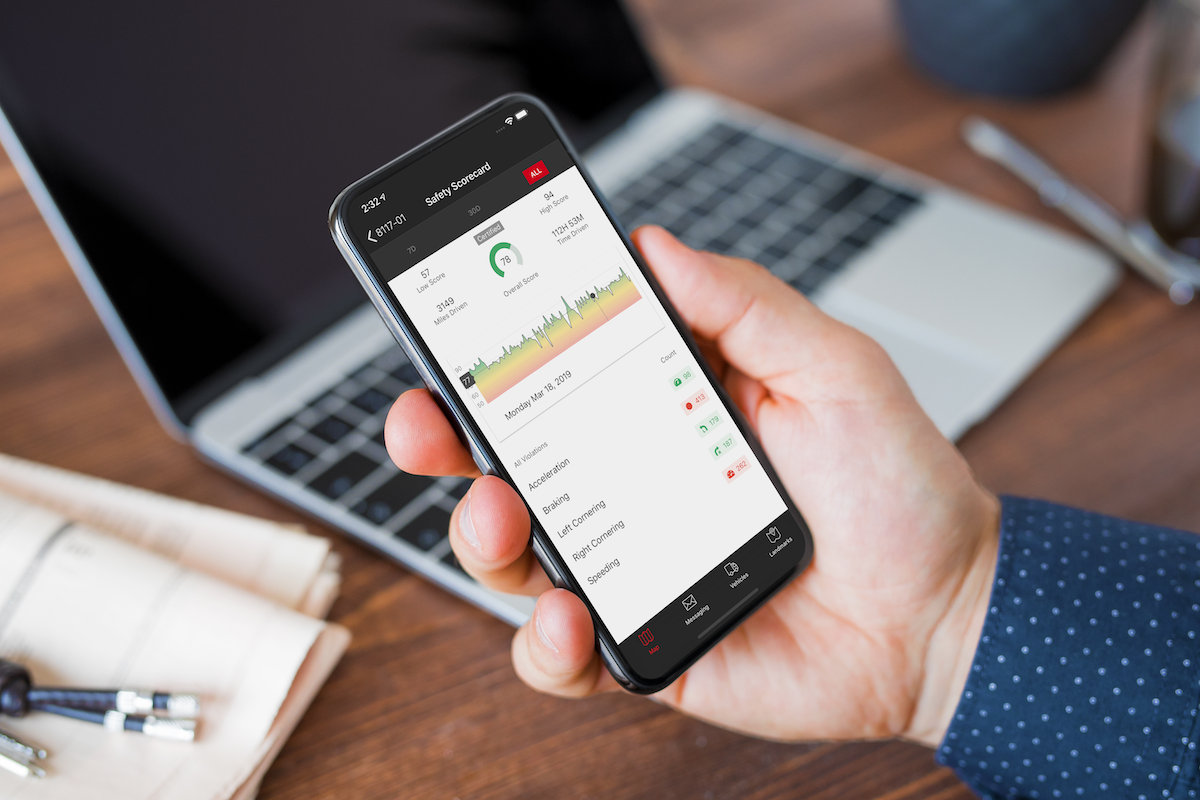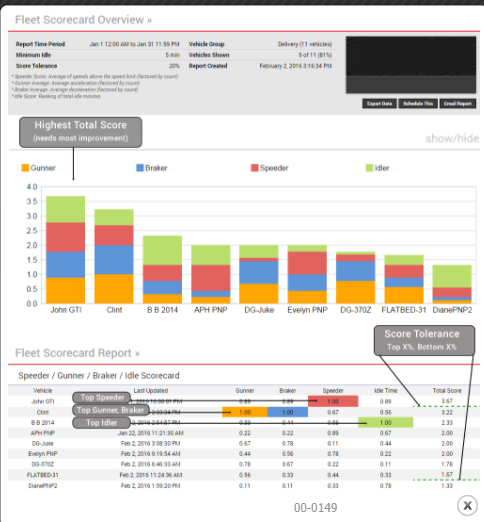
by: Karen Bradley
Despite being one of the greatest basketball players of our time, Shaquille O’Neal had a career free throw percentage of just 57.2%. Michael Jordon shot 83.5% from the free-throw line throughout his career. What does that have to do with driver scorecards? Because just like the scorecards for Michael and Shaq, driver scorecards provide you statistics about a driver’s behavior.
The usefulness of a driver scorecard, and whether you should use them at all, depends on your organization, your goals, and what you want or need to do with that data. Here is a breakdown of what driver scorecards are, and how they can be useful.
A driver scorecard is exactly like the player scorecard for a baseball or basketball player. Only in the case of a driver scorecard, it can show you the information you choose about drivers in your company.
This is made possible through the use of tracking software. You can look at everything from a driver safety score that is a conglomerate of several factors or a revenue-generating score, or even an efficiency score. For example, a safety score could be made up of things such as:
Here is an example of a driver scorecard report:

Driver behavior monitoring can be weighted according to your company goals and combined into an overall driver safety score. You can also look at individual statistics and share them with drivers to help coach them and help them improve their performance by comparing them to your driver policy for company vehicles. Many times you may find that drivers are unaware of these behaviors and will correct them when presented with data.
But it’s likely that safety is not your only concern. You can look at the time spent at each stop, idle times, fuel usage, routing, and other factors to increase the overall efficiency of each driver. How you arrange and use the driver scorecard metrics is up to you.
Of course, the first question many fleet managers ask is how they can leverage a vehicle tracking system and driver scorecards to increase profitability and manage their business better. The answers, while as varied as the businesses who give them, are pretty straightforward when looked at in general terms.
First, while fleet managers often feel that GPS tracking and driver scorecards give their drivers the “big brother-like” feeling of being watched, most employees welcome active feedback. They want to know what they are doing wrong so they can make corrections, especially if they take pride in their work.
One way to make this even more palatable is gamification and contests in our driver training. Everyone wants to be the best, so offer prizes for safety and efficiency. Develop a leaderboard and foster healthy competition amongst your team. This way you can use driver scorecards to improve, rather than detract from, employee morale.
Secondly, truck driver performance metrics can make your fleet more efficient in both time usage and fuel usage. This can free up time in your schedule for more jobs. One of the best ways to improve fuel economy and efficiency is to address issues with driver behavior.
You can also reduce maintenance costs. Excessive idling causes more wear and tear than starting and stopping the engine and can lead to serious problems.
Engine life is often measured in hours rather than just mileage, and excessive idling adds hours that cause more wear that reduces engine life overall.
GPS tracking and driver scorecards make your fleet and your drivers safer. By improving safety, you can increase profits in several ways. Preventing accidents not only reduces expenses and downtime, but it also lowers your insurance costs. That can be a huge bonus for fleet managers.
Driver scorecards also give you a good tool to communicate with your drivers. It’s easier to start a conversation about safety with data in hand than to start with rumors or vague concerns. You can also let drivers control the conversation by asking them how and where they can improve and assist them in setting goals that align with your company’s.
GPS tracking and driver scorecards enhance your ability to coach drivers, establish consistency, and achieve success.
Why choose EcoTrack Fleet Management over other options? There are several reasons why working with a smaller carrier has advantages.
EcoTrack offers a variety of GPS tracking and fleet tracking options designed to fit your needs. We can help you establish the criteria for driver scorecards and help you get the most value and the data you need to make your business more profitable.
But it’s about more than just being profitable. It’s about relationships. We want to get to know you and your business, and what we can do to make your fleet safer and more efficient. Get in touch with EcoTrack Fleet Management today by completing the demo request form below. We can’t wait to become a part of your fleet management team.